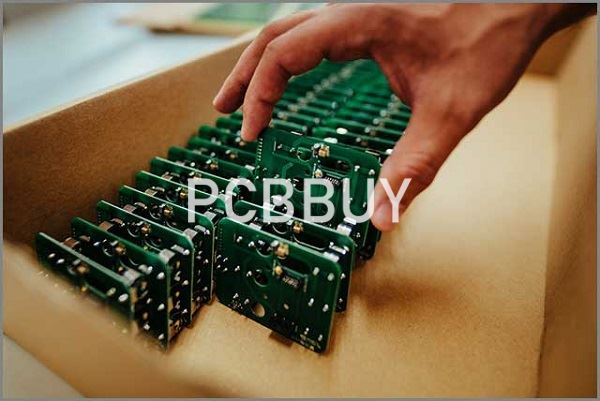Pcb Bare Board Panel Automated Trace Continuity Tester Orange
In PCB terminology, the term bare board refers to the state of a PCB without any through-holes or electronic components. A bare board consists of manufacturing processes that are comprised of the PCB's substrate, metal coating, conductive pathways and patterns. These pathways and patterns direct electricity which way to flow in the circuit.
Are you curious about the knowledge about PCB bare board? In this passage, we are going to provide you all the details about PCB bare board. If you are going to learn more about PCB bare board, please check and read content below.
If you want to order PCB product, please check and custom your order online.

1. What are the advantages of PCB bare board testing?
Implementing bare board testing in the PCB design process can lead to:
· Cost savings: Extensive testing in early design stages can help you save on the costs associated with faulty assembled PCBs.
· Streamlined production: By identifying issues in the prototyping stage, you can save time in later phases of production.
· Issue resolution: Bare board testing will help you identify potential issues early in production while narrowing down each problem's source.
2. What are the inspection types of PCB bare board?
Notice that the visual inspection only works when inspecting a two-layer PCB. It is the testing of the printed circuit board. This could be done manually or using automated devices to help find any possible problem. However, in multi-layer PCBs, a visual inspection will not give you the desired results. As such, it may be necessary that you conduct an electrical test.
Electrical Test
Here you may have to choose between a universal grid and a flying probe. The universal grid requires that you use fixtures in conducting the test, while the universal grid does not require the use of institutions. The universal grid is also referred to as the bed of nails or clamshell test.
Typically, a PCB test could either be capacitance or resistance. The capacitance test helps to detect opens and shorts. At the same time, the resistance test helps to measure the flow of current through traces. If you have traces of the same material, but one is two times longer than the other, the resistance of the longer one will be two times the resistance of the shorter one.
3. What is the basic structure of PCB bare board?
A bare board PCB (printed circuit boards) and the bare board testing play critical roles in PCB creation. Bare board, is the PCB before the electric components or through holes are placed on it. A bare board printed circuit boards comprise of:
· Substrate
· Metal Coating
· Conductive Pathways
Through a bare board layout, you could determine the placement of the components. In addition, the bare board testing can go a long way in ensuring that what you have is a reliable product.
Our bare printed circuit boards also assist you in penalization, place your PCB on large boards, mounting and plating process. We understand the complexity of PCB bare board manufacturing. Our goal is to provide best product which can fit your needs and best customer service.
4. What are the common defects of PCB bare board?
Excessive or missing copper
The essential element used to make traces on a bare board PCB is copper. Copper is used based on the fact that it's highly conductive, meaning that it can quickly transmit signals without losing some electricity along the way. However, either excessive or inadequate copper may cause defects on a bare board printed circuit board. Too much copper may bring about corrosion, while insufficient copper may bring about short-circuits to the board.
Short circuit problem
A short circuit is an electrical circuit problem that occurs when two or more wires that aren't supposed to come into contact together touch each other. A short course may bring about very high currents that flow through the course. That's not all. A short course also takes place the moment there's a bypass of some electrical current. When it comes to the production of bare board printed circuit board production, short circuits are common problems that many designers face. However, to fix the problem, there's a need to replace the wire. Otherwise, your bare board printed circuit boards won't function as intended.
5. How to select proper material for PCB bare board?
The primary material used in bare printed circuit board manufacturing is of immense importance. It is essential to factor in vital aspects such as the performance of the chosen materials such as adhesion, temperature resistance, flexibility, tensile strength, dielectric strength, flexibility, thermal factors, and many other physical factors. The performance of a bare board printed circuit board depends on the material chosen to manufacture it. Some of the most common materials used in the fabrication of empty board printed circuit boards include the following:
• FR-4 – FR-4 is a common material used in the manufacture of bare board PCBs. This material is made of a glass-reinforced epoxy laminate sheet. This material is water and flame resistant.
• PTFE (Teflon) – this is a kind of plastic material that doesn't provide any resistance. It is preferred based on its high speed.
• Metal – traditional materials such as copper, iron, and aluminIum still find their way in bare PCB manufacturing. They are preferred based on the fact that they provide excellent mechanical durability.
Wanna know PCB knowledge? Check and read for more.
Source: https://www.pcbbuy.com/news/Top-5-Important-Elements-of-PCB-Bare-Board-Manufacturing.html

0 Response to "Pcb Bare Board Panel Automated Trace Continuity Tester Orange"
Post a Comment